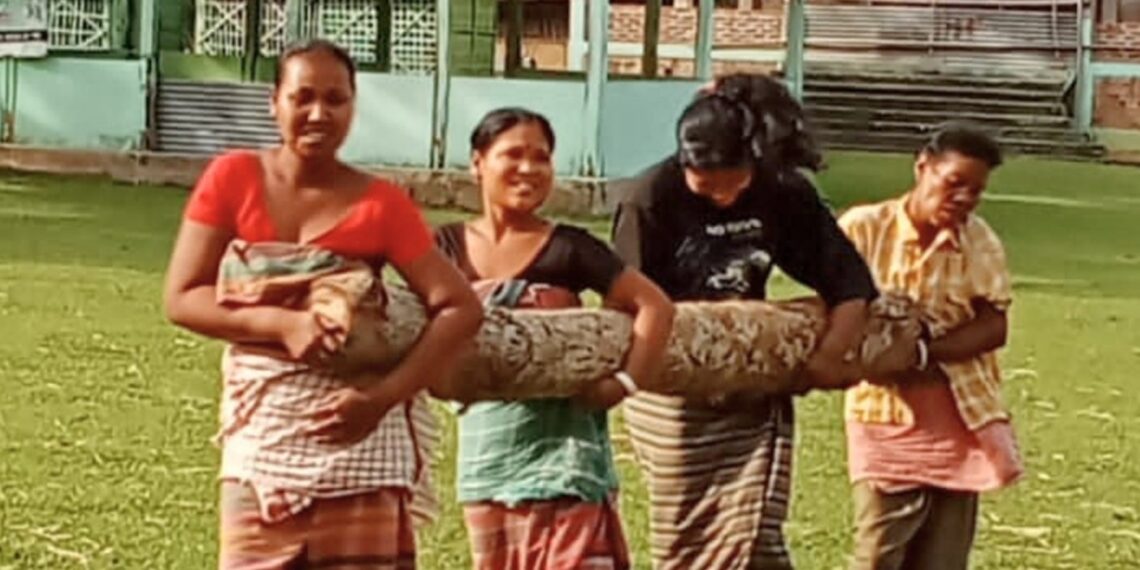GUWAHATI: “This single-strand, solar-powered fence that now shields our village from wild elephants, has given us a new lease on life and a whiff of prosperity after a prolonged period of mental agony and threats to our very existence. This fence is nothing less than the lifeline for villagers here,” said Kingish Koch, a mother of two daughters and, one among a few who helped erect the fence in the remote Besorkona Kochpara hamlet in Goalpara district of Assam.
The innocuous-looking wire, held high above the ground by posts made from tree stems, has brought smiles back to the faces of residents in the remote village.
The women of the village were severely affected by the unrelenting traumatic atmosphere caused by the human-elephant conflict (HEC).
They were compelled to finish household chores, including cooking dinner, by sunset as no one knew what would happen if a herd of wild elephants entered the village after dusk.
Hell used to break loose in this village, inhabited by the indigenous Koch community and located about 12 km away from the sub-division headquarters at Lakhipur in Goalpara district of Assam, when wild elephants entered the village at nightfall, raiding households in search of food.
As the menfolk tried to chase the elephants away, the women had to gather their children and elderly family members and run for safety.
“Some of the women of the village, like Kingish, Nilima Koch, Menoka Koch, and Pimila Koch, took the lead along with the men in installing this low-cost solar fence under the guidance of Aaranyak’s technical team led by Anjan Baruah. These women, numbering about 18, even carried heavy tree-stem posts on their shoulders to help install the fence,” said Dr Bibhuti Prasad Lahkar, the head scientist of the Elephant Research and Conservation Division of Aaranyak.
Biodiversity conservation organisation, Aaranyak, with support from USFWS and the Goalpara Territorial Division of the Assam Forest Department, installed a 2.5 km-long, single-strand solar fence in April this year to protect Besorkona and No.1 Pukhuripara villages as part of its sustained efforts to mitigate HEC and facilitate coexistence.
The length of the fence around Besorkona hamlet is 1.6 km.
“The low-cost solar fencing not only protects our lives and homes but has also empowered all the women in the village. We now carry on with our vocations of choice, besides the routine household chores, without any fear. We can now work freely in our horticulture homesteads, weave clothes, look after the children’s health and education, and contribute substantially towards improving our household economic condition,” added Kingish.
Nilima added that the women of the village, who used to spend sleepless nights in a raging HEC situation, could very well realise how their lives changed for the better with this solar fence.
“It has been so peaceful since the installation of the solar fence in April. We can now eat, sleep, and work in peace. The women in the village have started laughing once again; their health too has improved. Now, with the woman, the entire family laughs,” said Menoka Koch with a radiant smile.
Religious and cultural activities in the village have resumed, and the Kali Temple is now safe from wild elephants thanks to the solar fence, she added.















